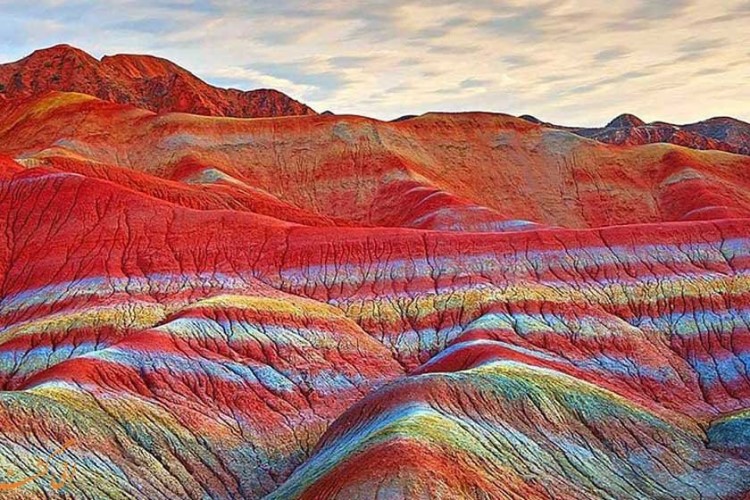
Persepolis is a symbol of the magnificence of ancient Iran and one of the most important must-see places in Shiraz. Perhaps the Persepolis region and the remaining buildings there can be regarded as one of the most important records of the civilization's history in the world. This is why prominent scientists and archaeologists worldwide have been traveling to Iran to visit Persepolis. Takhte Jamshid is a remnant of the Achaemenid kings in Iran 2500 years ago. When you consider the size of the Achaemenid Empire in ancient Iran, which encompassed a significant part of the eastern part of the world, one can imagine the glory of the seat of these kings in Persepolis.
However, what has drawn the world's attention to Persepolis is not only the history of this ancient city. By studying the inscriptions and works from this region in detail, archaeologists have identified the advanced civilization in ancient Iran. Many historians have also been surprised by the social laws of the Achaemenid period. In case you are interested in ancient Aryan civilization or would like to know more about Persepolis, stay tuned. In this article, we will present you with 10 facts about Persepolis that you probably didn't know, which is one of the best places to visit in Shiraz.
Where is Persepolis?
Persepolis is famous all over the world as a symbol of Persian civilization. Located in Fars province near Marvdasht in Shiraz, Persepolis, being one of the most famous places in Iran, shows the architectural splendor of the royal palaces in the ancient Iranian era. Achaemenid kings at the height of their power constructed their stone palaces in the heart of the mountain and around the city of Shiraz to leave a clear image of the majesty of their reign to future generations.
The columns, column heads, inscriptions, palaces, and gates that have been preserved on the site of Persepolis are some of the most famous works of civilization in the world. Persepolis, also known as "Parseh", attracts many tourists worldwide to Shiraz all year round.
The construction of Persepolis was begun about 25 centuries ago by Darius the Great on the foothills of the Rahmat Mountains. Some countless architects and artists participated in the construction of Persepolis, and the huge buildings were constructed by workers and laborers. Per the inscriptions' information, the construction of Persepolis took many years. Further on in this article, we will tell you 10 interesting facts about Persepolis and see what the significance of Persepolis is.

Persepolis wasn't the capital of the Achaemenid Empire
There are some doubts that Persepolis was one of the most important capitals and the seat of the royal family. The stone platform of Persepolis is built on an open plain without any special defensive structures like citadels or castles. From a distance, all the buildings there can be seen from three directions.
Despite the naming of the palaces, including the Palace of Xerxes, one cannot consider the halls and buildings of Persepolis as the residence of the kings and the royal family. There is a lack of housing facilities in the buildings as the capital for the royal family. It is possible that the king, his family, and his companions resided in this place for a short time during the spring festivities; but a temporary settlement in this place is quite something different from its use as the capital of a great empire.
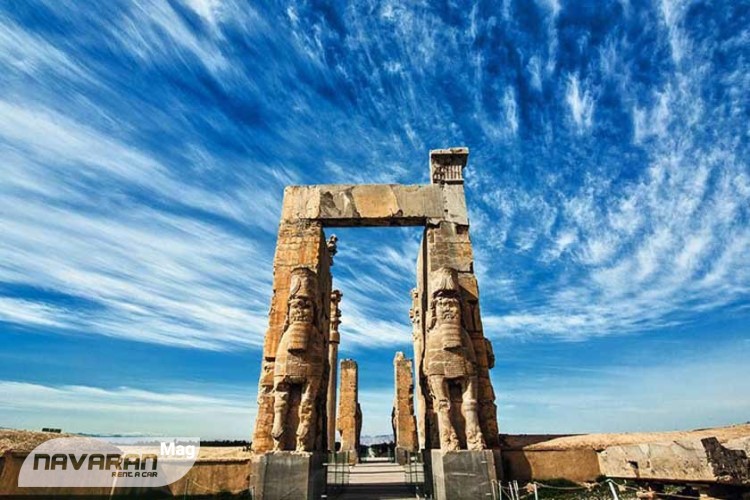
The reason for the naming of Persepolis
Today, the name used for the palaces built by Darius the Great and his successors is a fictitious name derived from the story of the mythical king of the Pishdadi dynasty in Iran, Jamshid. It is said in Ferdowsi's Shahnameh that Jamshid was a righteous king who ruled Iran for 700 years.
He established the Nowruz festival and had a bed carried on the shoulders of the demons. The petroglyph of Darius in Persepolis whose throne is carried on the shoulders of people, along with what residents and passersby could see in the past of the ruins of this historical building, made them believe that the image they see is the image of the legendary Jamshid with his throne carried on the shoulders of demons. He is being carried and the unidentified writings around him are written by demons and jinns. For that reason, this mysterious place was known as Takht-e Jamshid.
According to the inscription of Xerxes I on the wall of the Hall of Nations, we now know that this building was called "Parseh" by its builders. And the Greeks used to call this building "Persepolis" and the Sassanids recognized it as "Hundred Pillars". Besides this, the building was also known by names such as Jamshid Palace, Chehel Menar, or Chehel Sotun.
Read More: The ultimate guide to road trip from Tehran to Shiraz
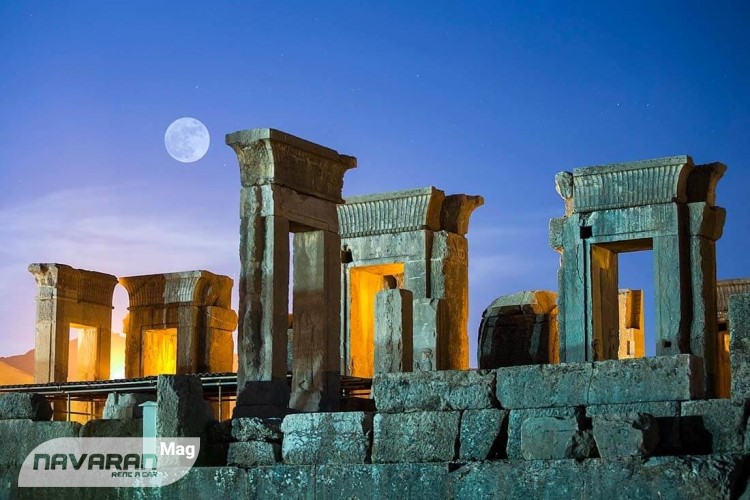
Why was Persepolis built in the first place?
According to the petroglyphs and patterns on the walls and stairs, some researchers think that Persepolis was a great sanctuary for religious rituals. Indeed, we know that Mithraism was widely practiced in the Iranian plateau long before Zoroastrianism, and under the Achaemenid kings, Ardeshir II had considerable respect for this particular god. It is perhaps possible to consider the lion attacking the cow relief in Persepolis as a sign of Mithraism; however, in this image, one must pay attention to the way the lion attacks the cow and to the marks on the cow's body. That cow is wearing a royal emblem and is not an ordinary cow.
Can we consider that lithographers and architects depicted an animal with a royal emblem as a sacrifice of Mithraism? On the other hand, it is the relief of the king's fight with the lion that is visible at a short distance from this relief. If the Mithraism religion was so widespread at that time that it was influencing the architects of Persepolis, why would the king kill the lion with a dagger, who is the symbol of this religion?
Then again, by a careful and close study we can find that each of Persepolis' halls and buildings is decorated in some way with special motifs that could be representative of the religion or beliefs of one of the subordinate tribes and nations, would this suggest that each of these halls has been used for carrying out a special ritual and for the followers of one of the many religions across the Persian Empire?
Could Persepolis be considered the center for the gathering of representatives of all the subordinate countries who came at a particular time to exchange opinions and have a close encounter with the king? They gathered around each other. However, there is no definitive statement that can be made about the reason for the construction of Persepolis.

There were no sundials in Persepolis
The determination of the exact time of Nowruz used the sunlight and a sundial in Persepolis is another one of the ideas proposed for the construction of this building. Some believe that the existence of some signs on those stones, in particular on the stone in the Three Gates Palace, suggests some kind of sundial to accurately determine the time of Nowruz on the 21st of March.
Such a theory would be correct if the exact time of Nowruz during the Achaemenid era were the same as the time of Nowruz in the present, which, however, is not the case. Throughout the Achaemenid era, the beginning of the New Year was the same as March 21 only once in the Cambyses II era, and in other cases, the start of the New Year varied from the end of March to the beginning of May.
Then again, the hall where this stone known as the sundial is located was blocked on all sides by walls during the Achaemenid era, preventing the sunlight from reaching the inside. And as mentioned earlier, Persepolis is located around a mountain, which also prevented the sunlight from reaching this building at the beginning of the sunrise, and the sunlight reaches the entire building of Persepolis, and in particular the Three Gates building when the day has fully arrived.
Furthermore, today we know that the signs and symptoms on this stone are not astronomic signs and indicators of the four main directions; rather, they are architectural signs as well as the signature of the architect and his stonemason, seen also on other pillars. The mentioned stone is, in fact, the lower base of a column that is no longer in existence today. Although it can be said that some special rituals, among them spring festivals, were held at this place, it was not the only venue for Nowruz.
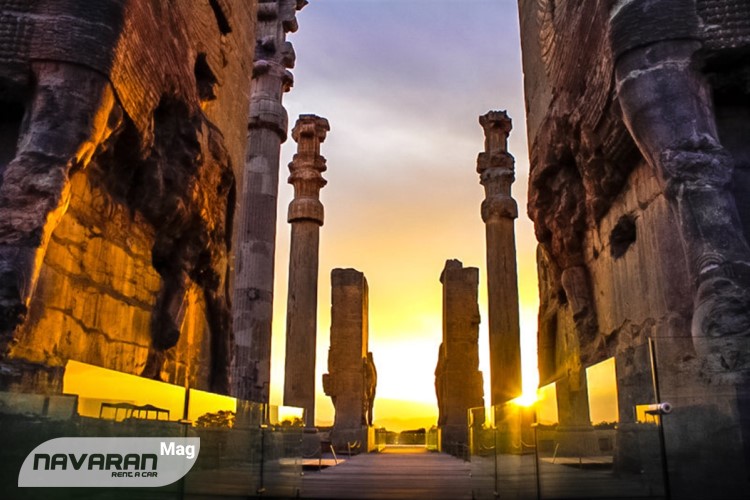
The secret of Gate of Nations
Upon reaching the top of Persepolis' stone platform, the first building in front of visitors is the splendid and huge stone gate known as the Gate of Nations or the Gate of King Xerxes. There are four inscribed stones on four huge pillars in three languages, which are almost similar to each other and indicate that this gateway was built or completed by King Xerxes. The ancient Persian text is in the center, the Elamite text on the outside, and the Babylonian text nearer the inside of the building.
The axis of the heel of the door, which is encircled by a large decorative stone and is found in both inner corners of the door, indicates that this door had a double leaf door and was higher than other doors. According to Hertzfeld, the height of these doors should have been over 30 feet. There were four 17-meter high columns inside the building, two of which still exist.
In addition, a stone water tank is found in this area near the southeast corner. This reservoir or water tank is located in the same direction as the gate building and other buildings in Persepolis. Seems that this reservoir was filled with underground water. This building's total area is 600 square meters.
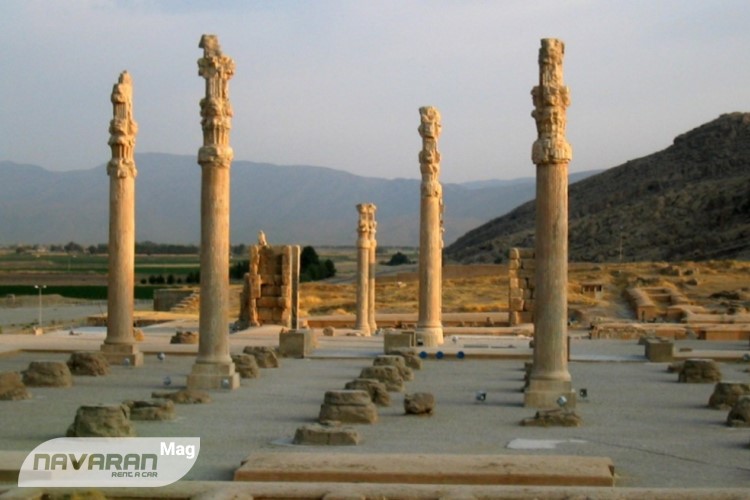
All about Apadana Hall
The biggest building of Persepolis is the Great Hall of Baraam or Apadana, which was designed and started by Darius the Great and completed by Xerxes I. The inscriptions referring to Xerxes I indicate that the construction of the said hall took about 30 years. The name of this hall is not written in any of the inscriptions found as Apadana as it is known today. This name was taken from an inscription from the time of Ardeshir II in Susa, used for a hall similar to this one. Because of this, it is a better idea to call this building the main public hall or the great pillared hall.
Indeed, this building is composed of a large square portico surrounded by thick mud walls that separate it from the pillared halls on the north, east, and west sides and a series of storerooms on the south. There are towers at the four corners of the building, with stairs that lead up to the roof. There are a total of 72 stone columns in this hall with a height of 20 meters and gorgeous column heads, giving a total area of the building of about 12,000 square meters. One very serious fire destroyed this hall.
The impact of the fire is more evident in the storage rooms and the southern tower. Here, the intensity of the fire was so high that the bricks underneath the green plaster of the wall turned pale red, and even large parts of the gray-green flooring of the room were burned and blackened to a depth of five millimeters to one centimeter.
Read More: 7 Awsome places for a day trip from Shiraz by car
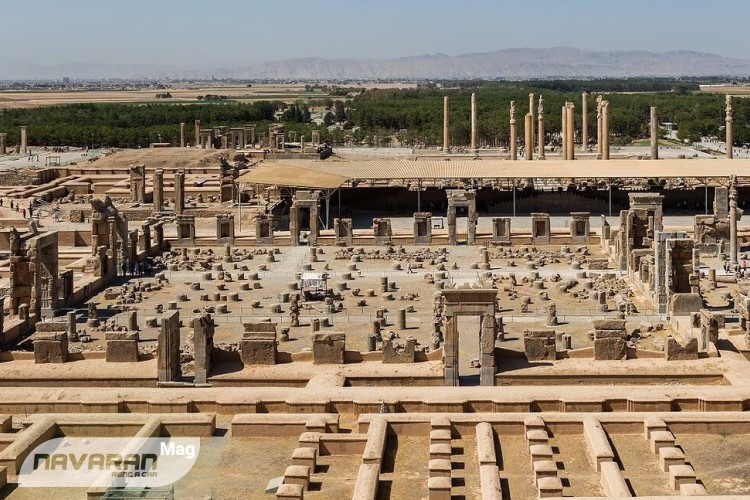
The water supply source of Persepolis
Approximately 30 meters from the eastern defensive wall, along the slopes of Mount Rahmat, a water source covering an area of 4.5 square meters was dug into the mountain cliff. This source, which must have been built in the time of Darius, was used for storing water from the winter rains. Besides this source, two kilometers north-northwest of Persepolis exists another source, which is also dug into the mountain cliff. There is a 6 to 9.5-meter-wide ditch on the east side of the main stone platform of Persepolis.
This ditch served both a defensive function and an embankment to protect against floods. In this way, the ditch is dry in normal times, while in times of heavy rains it serves as a water and sewage channel, and as a floodgate. Many objects have been found in this ditch, including pieces dating back to around 3000 BC and before the ditch was excavated.
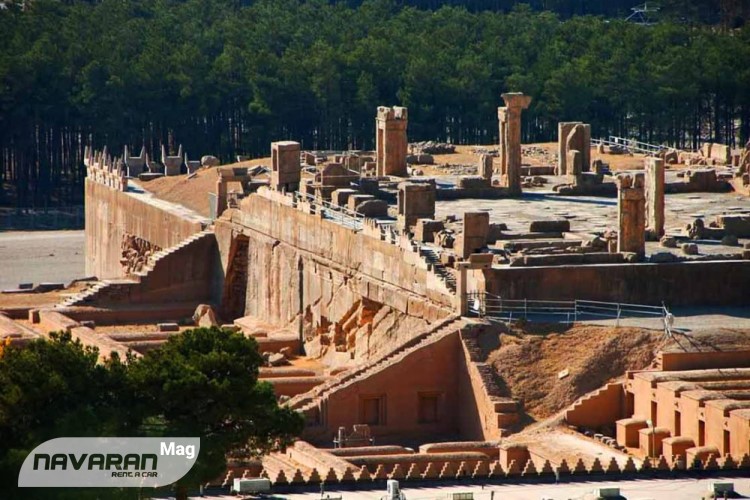
Persepolis had magnificent gardens
Probably one of the most outstanding accomplishments of the architects of Persepolis was the construction of magnificent gardens around this complex. While there are no traces of these gardens today, the presence of wells and water reservoirs, along with new studies and research, have demonstrated the existence of these gardens at Persepolis.
Before the building of Takht Jamshid, the first instance of these Iranian gardens was constructed in Pasargad on the orders of Cyrus the Great. Therefore, what was built at Persepolis should have been inspired by the Pasargad gardens.

Who built Persepolis?
With the discovery of Elamite inscriptions in the northeast corner of Persepolis stone platform, which was a part of the city wall of Persepolis, answered many questions about the builders of Persepolis, the nature of their employment, the number of salaries and wages, and much more was clarified. Initially, it was thought that these approximately 30,000 writings contained information on politics and unknowns about the lives of rulers and kings or literary and scientific texts; however, through study and translation, it has become clear that they contain payment vouchers, bills, and wages, in addition to financial and accounting reports.
Through this collection of writings, it was discovered that no slaves were employed at Persepolis. Everyone, from the architects to the supervisors and workers to the common laborers, was paid for their work. The chief financial administrator of Persepolis named "Barad Kama" was permanently present at the construction site to oversee the construction work and the affairs of the employees, as well as personally taking care of all imported materials and goods and registering and recording the financial issues. Interestingly, among the foremen and supervisors, some women supervised many workers.

Was Persepolis an observatory?
The first thing to note is that this building was in no way a place for observing the stars, an observatory, or a place for studying astronomy. At that time, the Achaemenids conducted their astronomical calculations based on mathematical calculations and there was no need to observe with their eyes or to measure the shadows and the sun rays, as was the practice of the native tribes of the Iranian plateau, the Babylonians and the Assyrians well before them. On the other hand, the palace of Persepolis's architecture fails to meet any of the existing definitions of buildings used for celestial observation.
Astronomical observation requires a building or observation tower of great height, and when such a tower does not exist, the observation building needs to be constructed in a completely open area providing an open and wide view from all sides. Using a simple field study in Persepolis or just by looking at the Persepolis map, we discover that there is no observation tower either in Persepolis or on Mount Rahmat, as well as, Persepolis rests on a high mountain that prevents a direct view of the horizon on this side.
Conclusion
Persepolis's name has a very long history behind it, something that can be talked about for years and which raises many ifs and buts. We tried to cover the most important parts about Persepolis in this article, otherwise, there is a lot to tell about this masterpiece. So what have you heard or read about Persepolis? Please share with us in the comment section.
If you have come to Shiraz by plane and need to rent a car in Shiraz to visit Persepolis thoroughly, you can easily rent the car you want from the Navaran Company in this city. With the convenient conditions and cheap prices of car rental in Shiraz that we offer, to rent a car in Iran has never been so easy. All you need to do is to choose the car you want by visiting our website or application and picking it up at the place of your choice.
